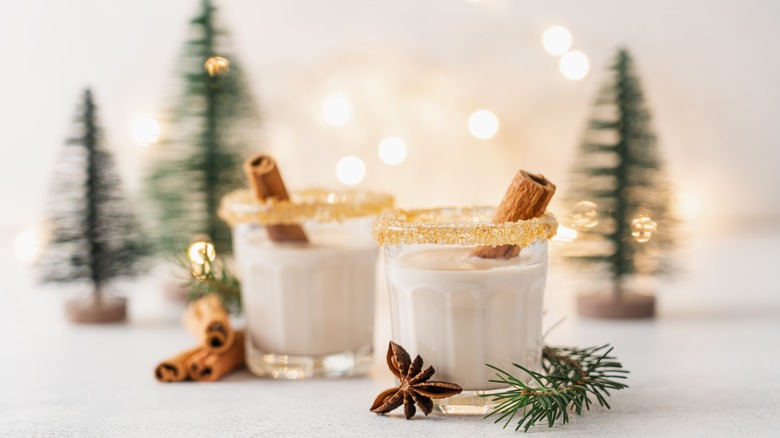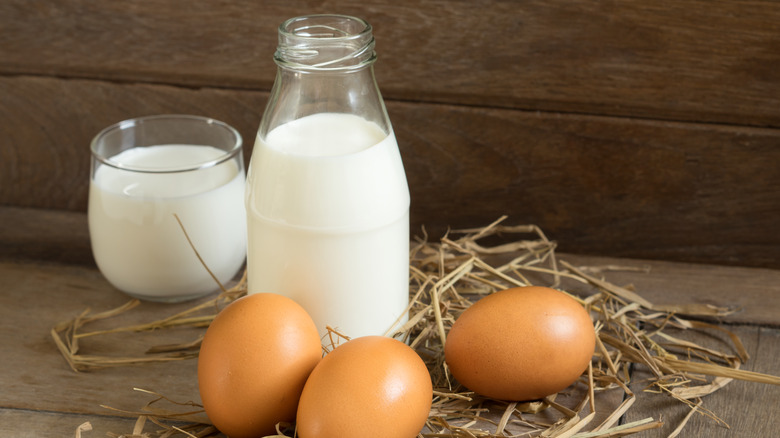Eggnog's Key Ingredients Once Symbolized Prosperity
Love it or hate it, it's eggnog season once again. Like drinking melted ice cream, the custardy tipple is sweet, creamy, and laced with just the right amount of fragrant spices and (of course) a generous glug of booze. Full of fat and flavor, while you might currently equate the eggy milk punch with pure gluttony, eggnog was actually once a symbol of prosperity in scarce times. Let us explain.
A custardy emulsification, making homemade eggnog from scratch is super easy. Simply heat milk and cream in a saucepan before slowly adding beaten eggs, sugar, and spices like nutmeg and cinnamon. Remove from the heat and whisk in a (typically dark) liquor. Our readers prefer rum for its notes of vanilla and caramel, but a shot of brandy or bourbon works just as well. Depending on your preference, you can drink the nog hot or cold — even aged. This is because the alcohol in versions of this bevvy will not only create a complex flavor but also kill pathogens and extend its shelf life. Punch recommends aging the nog anywhere between two weeks to several years so long as it's stored somewhere dark and cool, like the fridge.
Although eggnog has been the holiday beverage for centuries, it's fair to wonder why such a decadent drink made with so much eggs and dairy became popular in the first place. This is where things get interesting.
In the days of yore, only the wealthy could afford eggs and dairy
Though the word "eggnog" dates back to the late 18th century, the beverage predates this era by a few hundred years. Liquor.com explains that most historians agree that the cocktail drew inspiration from a milky, ale-based beverage known as posset that 13th-century monks enjoyed. Add in eggs, and eggnog was born.
TIME explains that eggs, milk, and even the sherry that spiked posset were items consumed solely by the wealthy. Thus, toasting eggnog became a symbol of good fortune and health — a sentiment that would prove true when the drink finally made its way across the pond.
According to Smithsonian Magazine, the abundance of farmland in Colonial America meant that milk and eggs were more accessible, making it possible for a wider audience to enjoy eggnog. Since then, the punch has become a key part of the holiday season on American soil and beyond. In fact, eggnog has inspired a host of variations south of the border, from the custardy Mexican Rompope to the coconut milk-infused Puerto Rican Coquito, and even the citrusy Venezuelan Ponche Crema.

